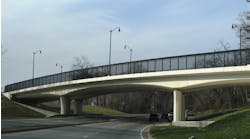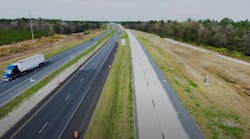Multiple goals came into play on the Crosstown Commons reconstruction project in Minneapolis, but one of the most important was to alleviate the congestion that lasted up to 10 hours a day. Contributing to the problem was the confluence of two separate freeways sharing lanes for about a mile, requiring drivers to merge and weave through traffic.
The Minnesota Department of Transportation (Mn/DOT) needed to completely reconstruct the interchange area to separate the shared lanes, increase roadway capacity and alleviate congestion. The project reconstructed 4 miles of I-35W, 2 miles of TH 62, nine interchanges, 26 bridges, 10 miles of retaining walls, 8 miles of noise walls and 6 miles of storm-sewer pipe. The project also introduced the region’s first in-line median bus rapid transit station and implemented the second MnPass managed lane in the Twin Cities area.
The work was complicated by the fact that the work area borders on established neighborhoods, so space was confined, and the freeways had to be kept open to traffic during the 3.5 years of reconstruction. It all added up to Mn/DOT’s largest ever highway construction project.
Mn/DOT limited closures of the major traffic movements with extensive early construction sequencing and design review. Use of retaining walls minimized right-of-way acquisition.
The new multilevel urban freeway interchange offers safer driving conditions and shorter commute times. In keeping with the Twin Cities area’s plan for transit-friendly applications, the project incorporates bus rapid transit, dynamic shoulders, managed lanes and transit bus stations.
The project was completed on schedule and within budget. All traffic lanes, the 46th Street transit station and the MnPass managed lane (part of the Twin Cities Urban Partnership Agreement) were opened by the planned date of Nov. 19, 2010. The ribbon-cutting ceremony was held on Nov. 13, 2010.


